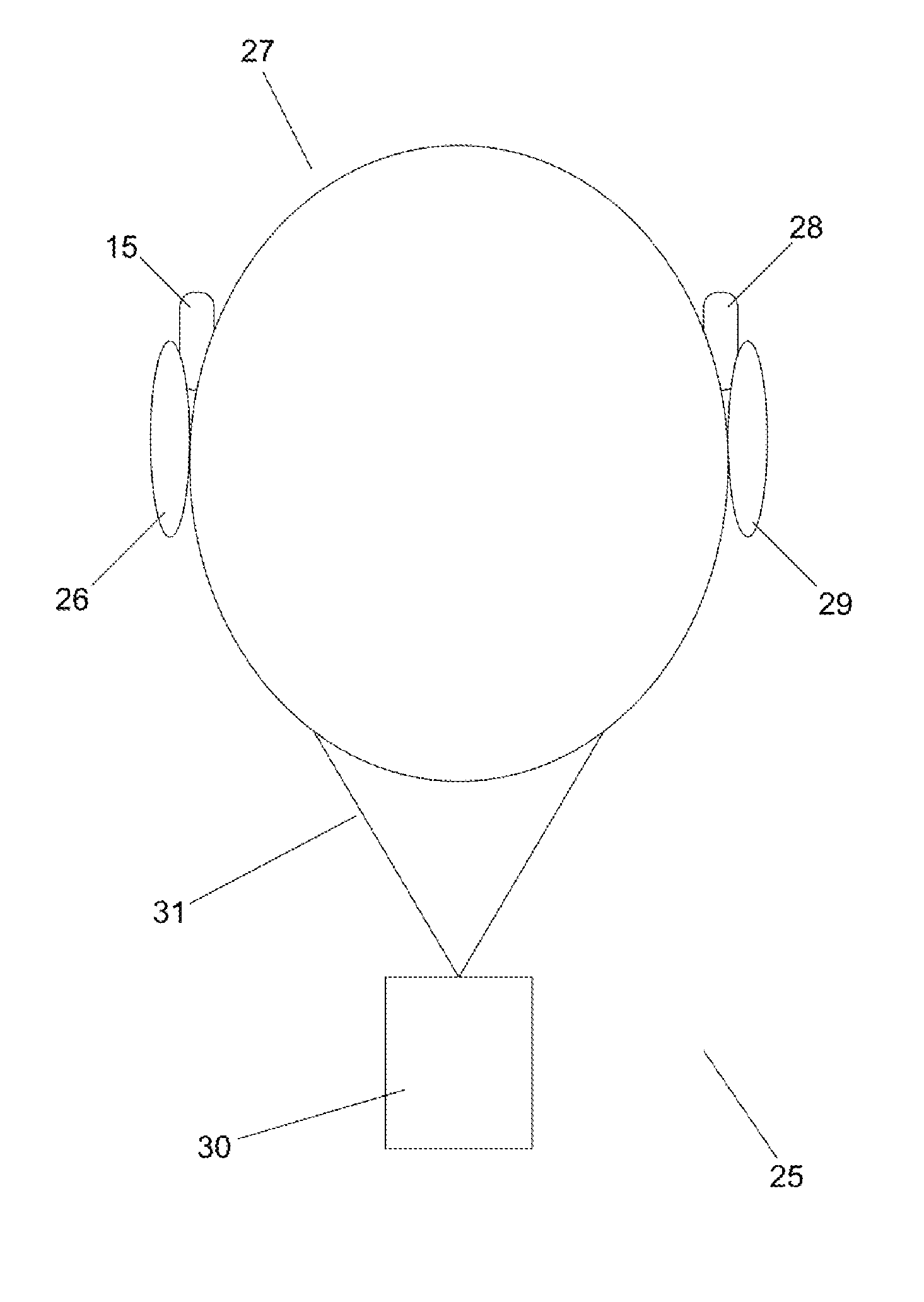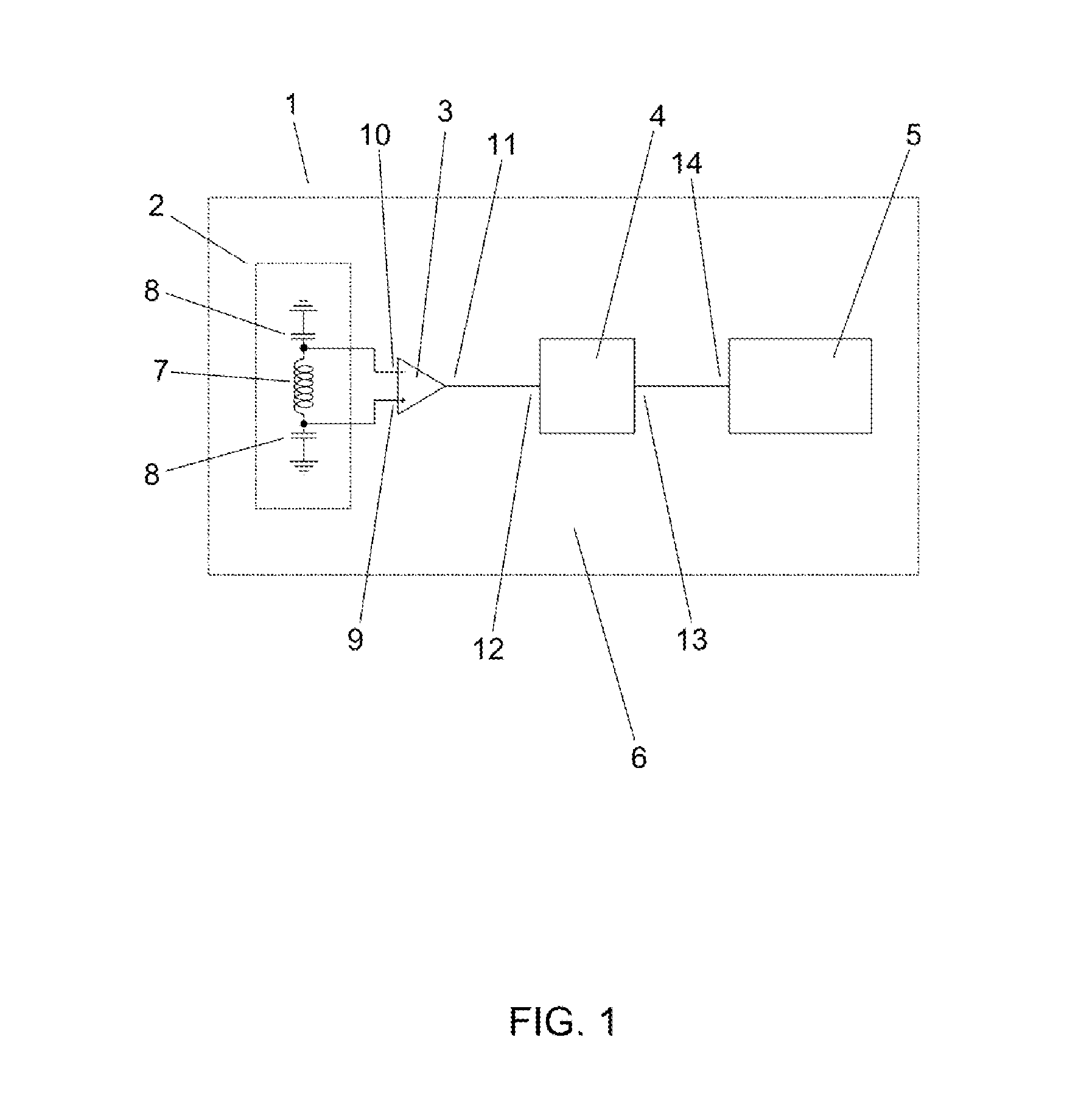Receiver and method for retrieving an information signal from a magnetic induction signal
a magnetic induction signal and information signal technology, applied in the direction of transmission, antennas, energy consumption reduction, etc., can solve the problems of deterioration of the received signal, reducing the obtainable communication speed, and deviation from desired specifications
- Summary
- Abstract
- Description
- Claims
- Application Information
AI Technical Summary
Benefits of technology
Problems solved by technology
Method used
Image
Examples
Embodiment Construction
[0024]The receiver 1 shown in FIG. 1 comprises an antenna circuit 2, a low-noise amplifier 3, a comparator 4 and a digital demodulator 5 connected to form a signal path 6. The antenna circuit 2 comprises an antenna coil 7 with two terminals and two tank capacitors 8. One terminal of each tank capacitor 8 is connected to a respective terminal of the antenna coil 7, and the respective other terminals of the tank capacitors 8 are connected to a ground-plane of the receiver 1. The terminals of the antenna coil 7 are further connected respectively to a positive input terminal 9 and a negative input terminal 10 of the low-noise amplifier 3. An output terminal 11 of the low-noise amplifier 3 is connected to an input terminal 12 of the comparator 4. An output terminal 13 of the comparator 4 is connected to an input terminal 14 of the digital demodulator 5.
[0025]The antenna coil 7 and the tank capacitors 8 form a passive, narrow band-pass filter with a centre frequency of 4 MHz and a 3-dB ba...
PUM
 Login to View More
Login to View More Abstract
Description
Claims
Application Information
 Login to View More
Login to View More - R&D
- Intellectual Property
- Life Sciences
- Materials
- Tech Scout
- Unparalleled Data Quality
- Higher Quality Content
- 60% Fewer Hallucinations
Browse by: Latest US Patents, China's latest patents, Technical Efficacy Thesaurus, Application Domain, Technology Topic, Popular Technical Reports.
© 2025 PatSnap. All rights reserved.Legal|Privacy policy|Modern Slavery Act Transparency Statement|Sitemap|About US| Contact US: help@patsnap.com



